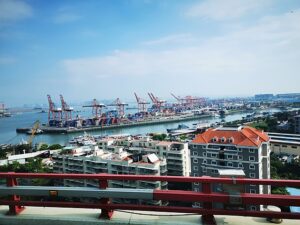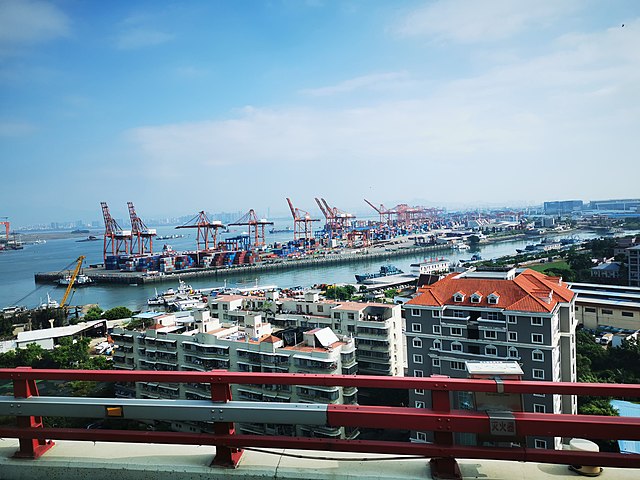-
Asia continues to strengthen its position as a maritime hub amid the pandemic, bringing together more than half of global maritime trade volumes
-
In container port cargo handling, the region has a share of nearly 65% of global container port traffic
-
About half of the countries featured among the top 20 ship-owning countries, ranked by carrying capacity in deadweight tons, are located in Asia
-
China is the best connected country worldwide. Five of the top 10 ports are located in China while three are in other Asian countries
 Despite the negative impact of COVID-19 in the region, Asia continues to dominate the global maritime trade arena, according to a new United Nations Conference on Trade and Development (UNCTAD) report.
Despite the negative impact of COVID-19 in the region, Asia continues to dominate the global maritime trade arena, according to a new United Nations Conference on Trade and Development (UNCTAD) report.
UNCTAD’s “Review of Maritime Transport 2020” said the region has strengthened its position as a maritime hub, bringing together more than 50% of global maritime trade volumes last year.
In 2019, Asia accounted for 41% of goods loaded and 62% of goods unloaded globally. Developing countries in the region accounted for 76% of all maritime trade loaded and unloaded in developing regions.
The continued prominence of Asia as the world’s factory continued to boost expansion in intra-Asian container trade, with a growing contribution from Southeast Asia. Together, intraregional trade, principally intra-Asian flows, and South-South trade represented about 40% of total containerized trade in 2019.
The UNCTAD report, released on November 12, said the impact of COVID-19 in the region has been mixed. Trade in East Asia fared relatively better than in other subregions following COVID-19. In July, East Asia imports fell by 4% and exports by 1%, in sharp contrast to the double-digit decline rates in the others. In West and South Asia sub-regions, imports have dropped by 23% and exports by 29%.
During the pandemic, too, constraints on transportation and logistics and lack of workers have prevented the timely delivery of components from China and other countries to factories in Southeast Asia.
“As a result, response measures such as sourcing directly from Viet Nam, switching from land to air freight, and rerouting shipping lanes that previously included stops at Chinese factories have been implemented,” said the report.
At the same time, the report observed that growing e-commerce as a result of COVID-19 will put more pressure on warehousing and distribution capacity. This is because business will want to ensure safety stocks and buffers are available. In turn, this will increase demand for storage and space which is already outpacing the supply in Asia.
Asian ports experienced a moderate decrease in liner shipping connectivity levels due to the pandemic, with the impact more intensified during the second quarter amid growing lockdowns and economic and travel restrictions.
Asia in 2019
The report looked back at 2019 for key trends in seaborne trade and port cargo traffic. Among its findings:
- Asia continued to be the leading global player in container port cargo handling, with a share of nearly 65% of global container port traffic last year.
- The ranking of the world’s top 20 container ports in 2019 changed little compared with 2018. However, Asian ports maintained their position, with 16 among the top 20 world container ports being located in Asia. Of these, eight were in mainland China, one in Hong Kong and one in Taiwan.
- Trade tensions between the United States and China impacted on maritime trade in 2019. Vietnam benefited the most from changing trade patterns. The market shares of Cambodia, Indonesia, Malaysia, the Philippines, Singapore and Thailand did not increase at the same pace as those of Vietnam.
- Asia is also an important service provider. As of January 1, 2020, about half of the countries that featured among the top 20 ship-owning countries, ranked by carrying capacity in deadweight tons, were located in Asia.
- As of January 1, 2020, three of the top 10 countries of ship registration by dollar value were located in Asia—China, Hong Kong and Singapore.
- China, Japan and the Republic of Korea maintained their traditional leadership in shipbuilding, representing 92.5% of the newbuilding deliveries in 2019.
- Bangladesh remains the country with the largest global share of recycled tonnage, accounting for more than half of the ships recycled in 2019.
Port connectivity, future of labor
The report also assessed liner shipping connectivity of ports and indicated that in 2020, six of the 10 best connected economies are in Asia (China, Hong Kong, Japan, Malaysia, Republic of Korea and Singapore).
China is the best connected country worldwide. In 2020, five of the top 10 ports are located in China—Hong Kong, Ningbo, Qingdao, Shanghai and Xiamen—while three are in other Asian countries (Malaysia, the Republic of Korea and Singapore).
The top 50 best-connected port pairs are on intraregional routes, almost exclusively within Asia, except for two connections within Europe.
On maritime labor force, UNCTAD said future work in the maritime sector will look very different from how it does today—there will be less jobs onboard ships and more onshore jobs, requiring a more adaptable workforce.
“Reskilling and retraining will be crucial in preparing workers for the transformations that will arise due to advanced technologies and automation. This is of particular importance to Asian countries that are suppliers of global maritime shipping labour such as—by order of ranking—China, the Philippines, Indonesia and India,” said the report.
Photo by Liuxingy





